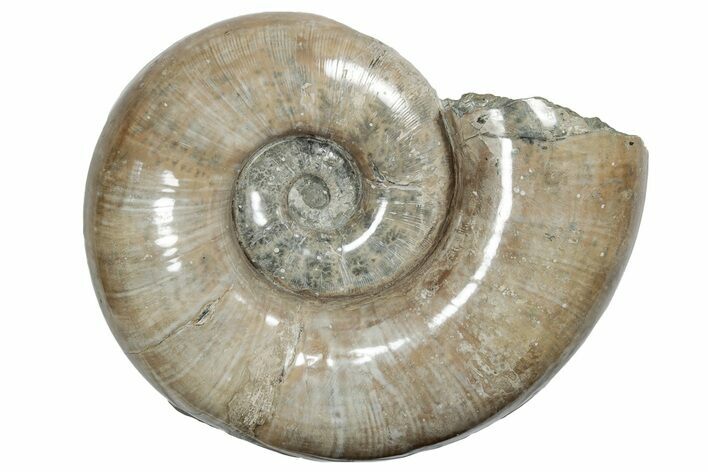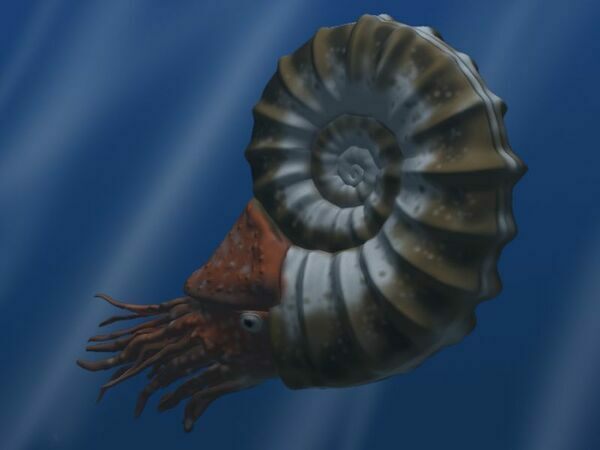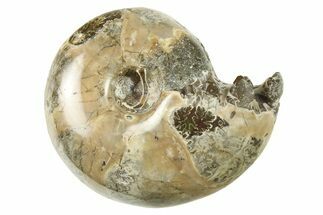This Specimen has been sold.
18.5" Polished Ammonite (Argonauticeras) Fossil - Giant Specimen!
This is a massive, 18.5" wide polished ammonite fossil (Argonauticeras besairiei), collected near Ambatolafia, Madagascar. It makes for a very impressive display on the included metal display stand.
You rarely get ammonites of this size out Madagascar. While it is incomplete on one side, this is to be expected on larger ammonites that will typically be found as partials or already fractured/fragmented within the rock. The rock from the display side has been meticulously prepped away and the ammonite has been polished.
Comes with a rebar display stand.
You rarely get ammonites of this size out Madagascar. While it is incomplete on one side, this is to be expected on larger ammonites that will typically be found as partials or already fractured/fragmented within the rock. The rock from the display side has been meticulously prepped away and the ammonite has been polished.
Comes with a rebar display stand.
About Ammonites
Ammonites were ancient marine cephalopods, similar to today's squids and octopuses, but with a defining feature: their distinctive, tightly coiled spiral shells. These shells, resembling those of modern nautiluses, served as both a protective home and a buoyancy aid, allowing ammonites to navigate the prehistoric seas with ease. First emerging around 240 million years ago in the Triassic Period, ammonites thrived for over 175 million years, adapting through numerous forms and sizes. As predatory creatures, they likely fed on smaller marine organisms, using their tentacles to capture prey. However, their long reign came to an end 65 million years ago at the close of the Cretaceous, coinciding with the mass extinction event that also eliminated the dinosaurs.
Ammonites were ancient marine cephalopods, similar to today's squids and octopuses, but with a defining feature: their distinctive, tightly coiled spiral shells. These shells, resembling those of modern nautiluses, served as both a protective home and a buoyancy aid, allowing ammonites to navigate the prehistoric seas with ease. First emerging around 240 million years ago in the Triassic Period, ammonites thrived for over 175 million years, adapting through numerous forms and sizes. As predatory creatures, they likely fed on smaller marine organisms, using their tentacles to capture prey. However, their long reign came to an end 65 million years ago at the close of the Cretaceous, coinciding with the mass extinction event that also eliminated the dinosaurs.
SPECIES
Argonauticeras besairiei
LOCATION
Ambatolafia, Mahajanga Province, Madagascar
SIZE
18.5" wide, 6.3" thick, 68.7 lbs
CATEGORY
SUB CATEGORY
ITEM
#214773
We guarantee the authenticity of all of our specimens.
 Reviews
Reviews














